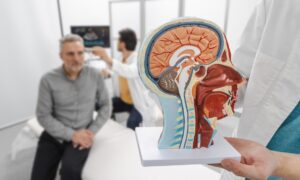In an era where technology is advancing at breakneck speed, possessing expertise across multiple disciplines has become increasingly invaluable. The convergence of robotics, Human Capital Management (HCM), and science-based artificial intelligence (AI) represents a frontier of innovation that promises to revolutionize various industries. This exploration delves into the integration of these diverse domains, highlighting the advancements and impact of combining robotics with AI, the transformation of HCM through automation, and the application of scientific principles in AI to solve complex problems. Through a comprehensive analysis, we uncover the synergies and future trends that define this exciting intersection of technology and human ingenuity.
Saandeep Sreerambatla’s contributions to automation, AI, and robotics are shaping the future of these fields, which are marked by significant achievements and innovative projects. Saandeep’s expertise spans across algorithmic robotics, machine learning, and optimization techniques, making him a crucial asset in various technological domains.
During his master’s program, he delved into algorithmic robotics, published two influential papers, and completed a project involving a Baxter robot. This project, which focused on navigation, vision, and manipulation, demonstrated his ability to integrate multiple robotics disciplines. Saandeep’s work with the Baxter robot achieved a 95% success rate in object manipulation, showcasing his proficiency in advanced computer vision algorithms and system integration.
In the realm of service desk management, Sreerambatla developed a dashboard for monitoring service desk tickets, created classification models for job titles, and implemented a chatbot for payroll issues. His efforts resulted in remarkable improvements, such as increasing ticket assignment accuracy from 80% to 95% and streamlining the classification of 2.2 million job titles. These innovations not only enhanced operational efficiency but also reduced manual effort and call volumes, significantly benefiting the organization.
His expertise extends to machine learning and optimization. He developed and implemented machine learning models using Amazon SageMaker and Azure, applied Maxwell’s equations to solve complex electromagnetic problems, and optimized antenna designs and chemical processes using lmfit and genetic algorithms. These projects led to substantial improvements in model deployment efficiency, performance, and overall project outcomes.
Equipping the Baxter robot with the ability to autonomously traverse its environment, identify various objects, and successfully grasp them is his significant undertaking. This endeavor highlighted his ability to integrate robotics, AI, and computer vision, resulting in a highly functional system. Additionally, he developed an automation framework for insurance services and machine learning models for production deployment, further demonstrating his versatility and impact across different sectors.
“Integrating vision and manipulation for the Baxter robot required advanced computer vision algorithms, while accurately classifying service desk tickets and job titles demanded sophisticated models and techniques,” he mentioned. Saandeep also faced challenges in data preprocessing and model optimization, which he successfully addressed, leading to efficient machine learning deployments and improved performance in electromagnetic and chemical processes.
Moreover, his modular and reusable framework design led to a 30% reduction in testing cycle time, and the improved ticket assignment accuracy significantly enhanced operational efficiency. His work in machine learning and optimization achieved measurable improvements in performance and efficiency, contributing to the overall success of the projects.
Sreerambatla’s published works further establish his authority in the field. His research papers and articles provide valuable insights into best practices for data management, automation, and optimization. These publications reflect his deep understanding and expertise, benefiting both academic and professional communities.
Looking ahead, Saandeep Sreerambatla envisions several trends shaping the future of his field. Integrating robotics with AI and computer vision will drive advancements, leading to intelligent, autonomous systems and collaborative robots working alongside humans. In the realm of Human Capital Management (HCM), sophisticated AI models for HR tasks and increased use of chatbots and automation tools will enhance efficiency and accuracy. Additionally, cloud-based machine learning and advanced optimization techniques will continue to drive innovation in various fields, addressing complex problem-solving needs and developing sophisticated algorithms.
His work exemplifies the importance of continuous learning and interdepartmental collaboration. By staying abreast of the latest developments and fostering strong partnerships with other functional teams, he ensures the success of his projects. His focus on quality and adaptability, along with his ability to integrate new tools and methodologies, positions him as a leader in the rapidly evolving fields of automation, AI, and robotics.





























